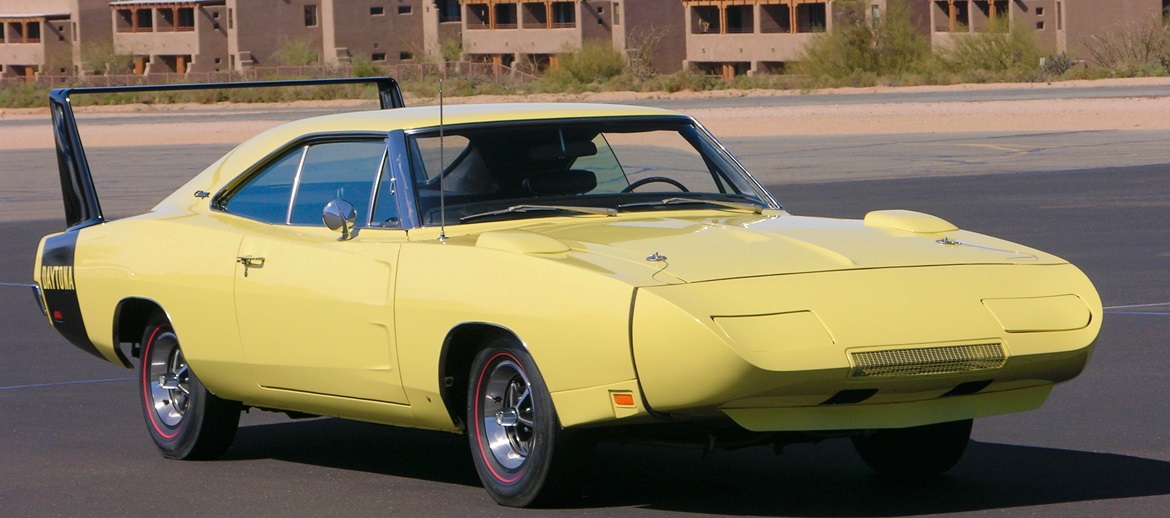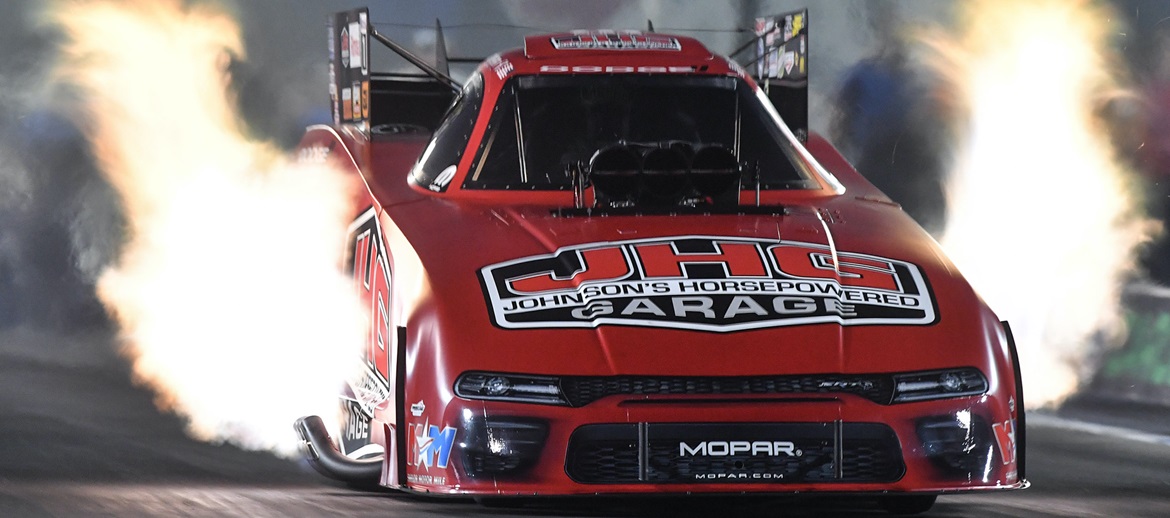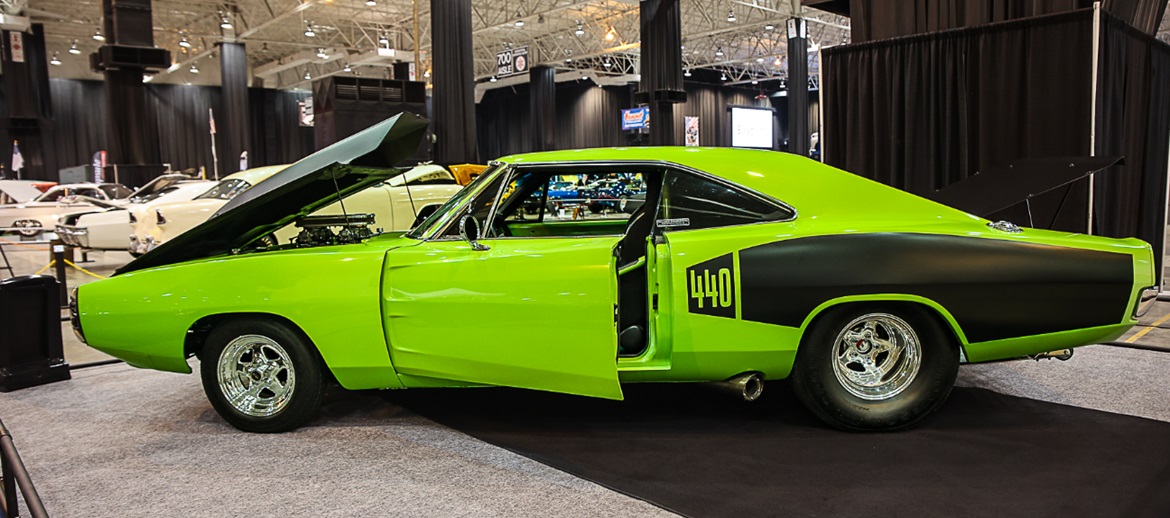440 Six Pack Charger Daytona
1 year ago Heritage
— Chrysler’s Lead Engineer Larry Rathgeb was the man who took the 1969 Daytona from fantasy to reality
— Body shape was tested by using a clayed 3/8 scale model in the Wichita State University’s 7′ x 10′ wind tunnel
— 1971 NASCAR rules changes mandated the switch for the Winged cars from the HEMI® engine to a 5-liter engine, making the aero car no longer a viable factory race program
IT WAS ALL ABOUT AERODYNAMICS
Designed to gain supremacy on the NASCAR superspeedways, the 1969 Dodge Charger “Daytona” was a truly outrageous machine as it sported a front nose that was some 18 inches longer than normal, and a radical wing added to the rear, measuring 23.5 inches tall and 58 inches wide, all appearing rather out of place on a passenger car. The whole package was said to have 23 percent less wind drag than the Charger 500 it replaced. Only 503 of them were built and today all survivors are highly cherished.
These Daytonas were created with the help of Creative Industries of Detroit — and legend has it with the addition of the sheet-metal front nose, trimmed fenders, fender scoops, A-Post wind deflectors, revised backlight (and associated metal work required for its flush fit), special trunk lid and huge rear wing (adjustable in 12 degrees), that the factory actually lost something like $1,500.00 per unit. However, profit was not the motivation to sell these Charger Daytonas, the real reason for the car and its design was to beat the competition on the racetracks of America.
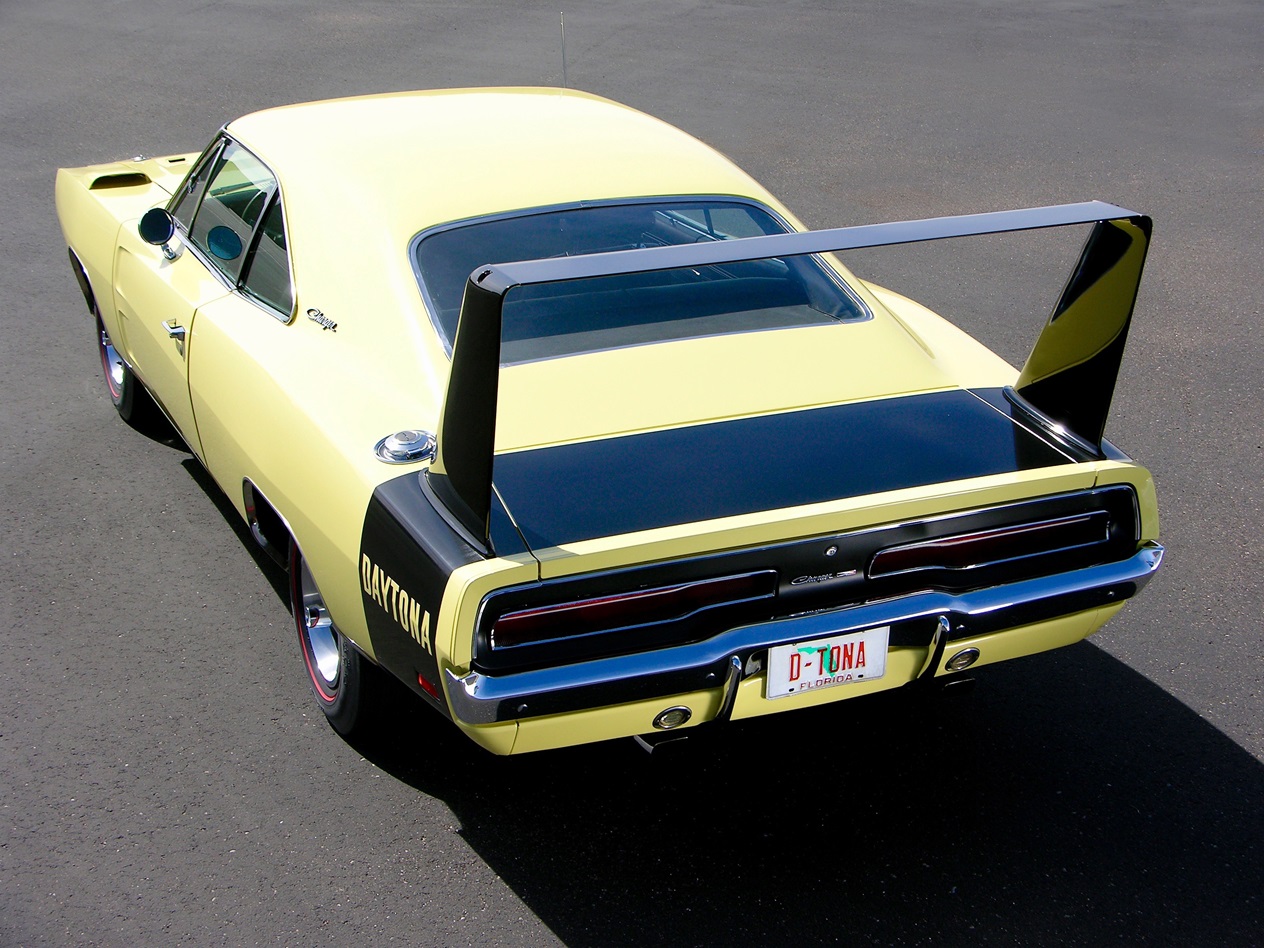
No mistaking a 1969 Dodge Charger Daytona from the rear! The Y2-color code Daytona pictured here is a very unique car as it is a very early production version (scheduled production date of April 27, 1969) and is highly optioned.
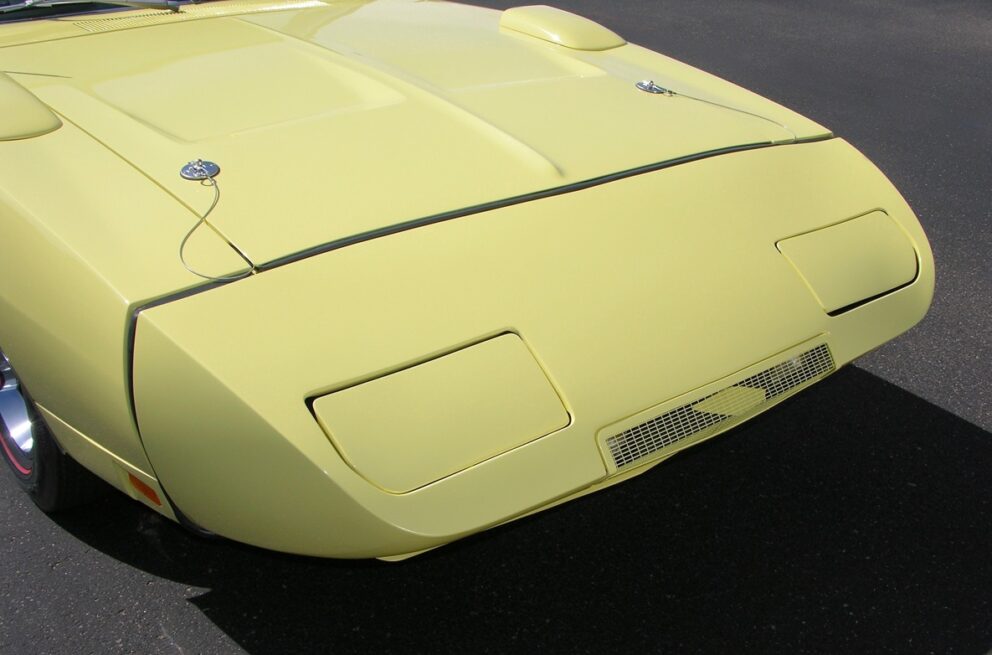
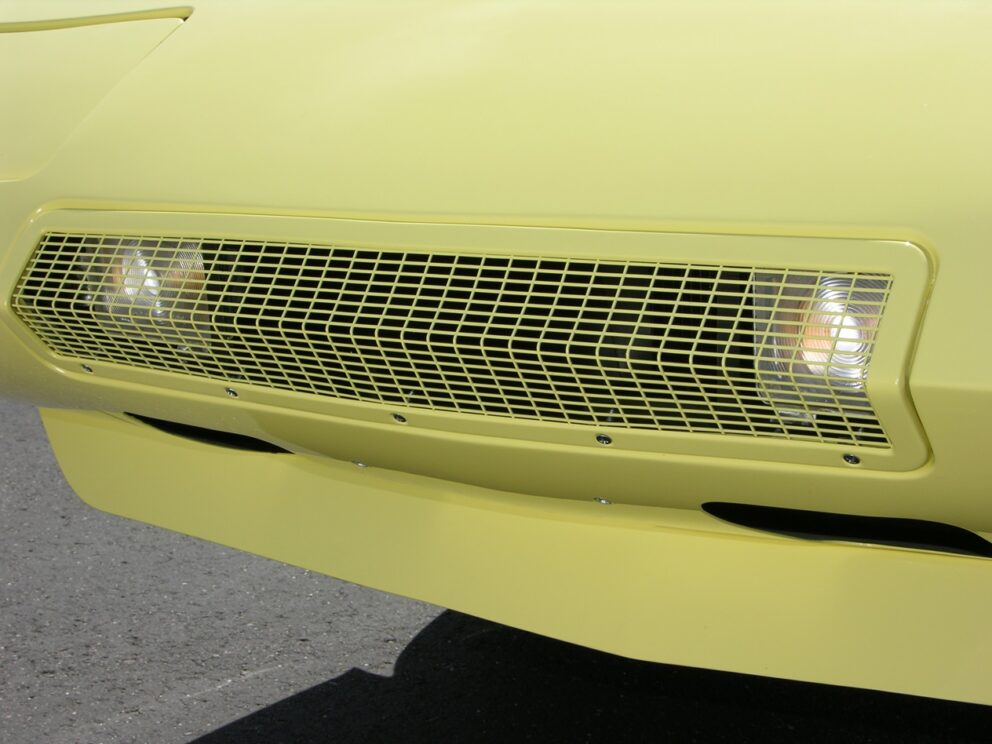
The new front end nose sloped rapidly to a knife’s edge, with vacuum-operated hide-a-way headlamps. The engine cooling air came in from this small “mail slot” opening and with two smaller holes below it, and while it was adequate for racing applications, it was a definite change from traditional airflow to the radiator for street applications. The turn indicators are located in this grille as well. Below is a 4-inch deep spoiler.
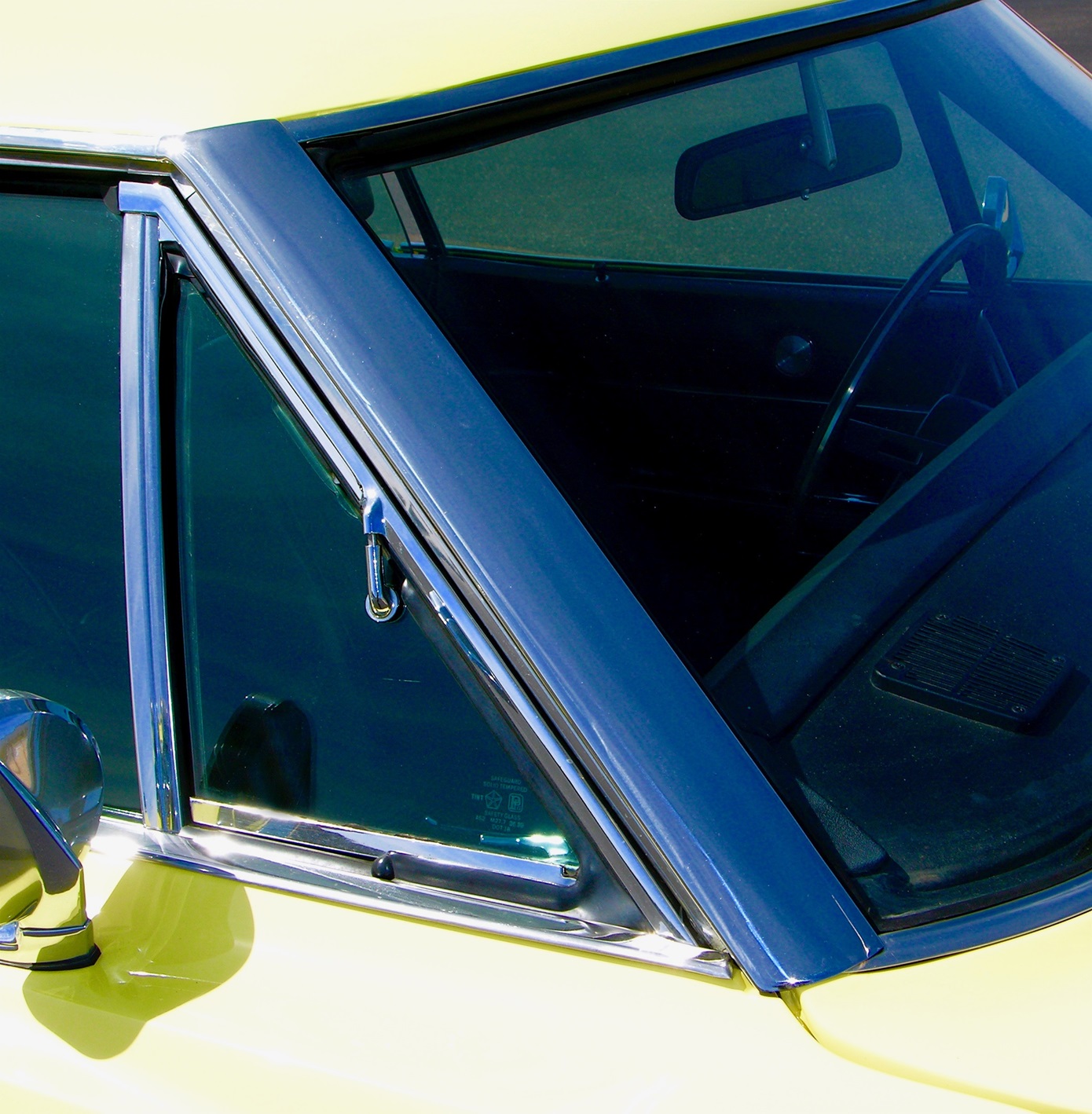
While wind tunnel testing, the Chrysler aerodynamic engineers found a place that needed some improvements, the A-pillar posts, so they added these covers to help the streamlining effect.
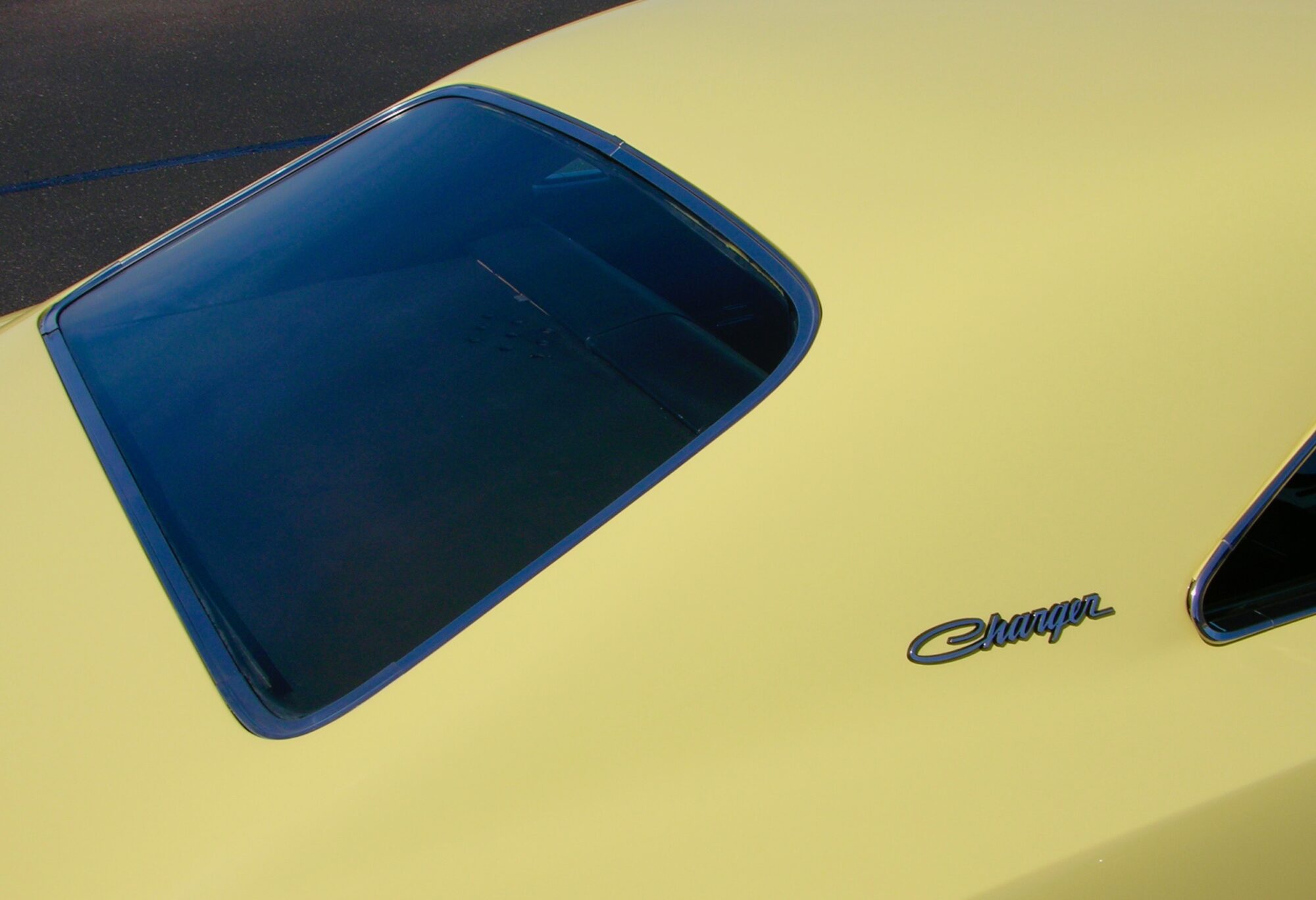
This Charger’s aerodynamics improved greatly with a “flush” rear window (aka backlight), with the elimination of the “flying buttress” design where the original window was positioned at a much more upright position (45-degrees standard vs. 22-degrees on 500s and Daytonas).
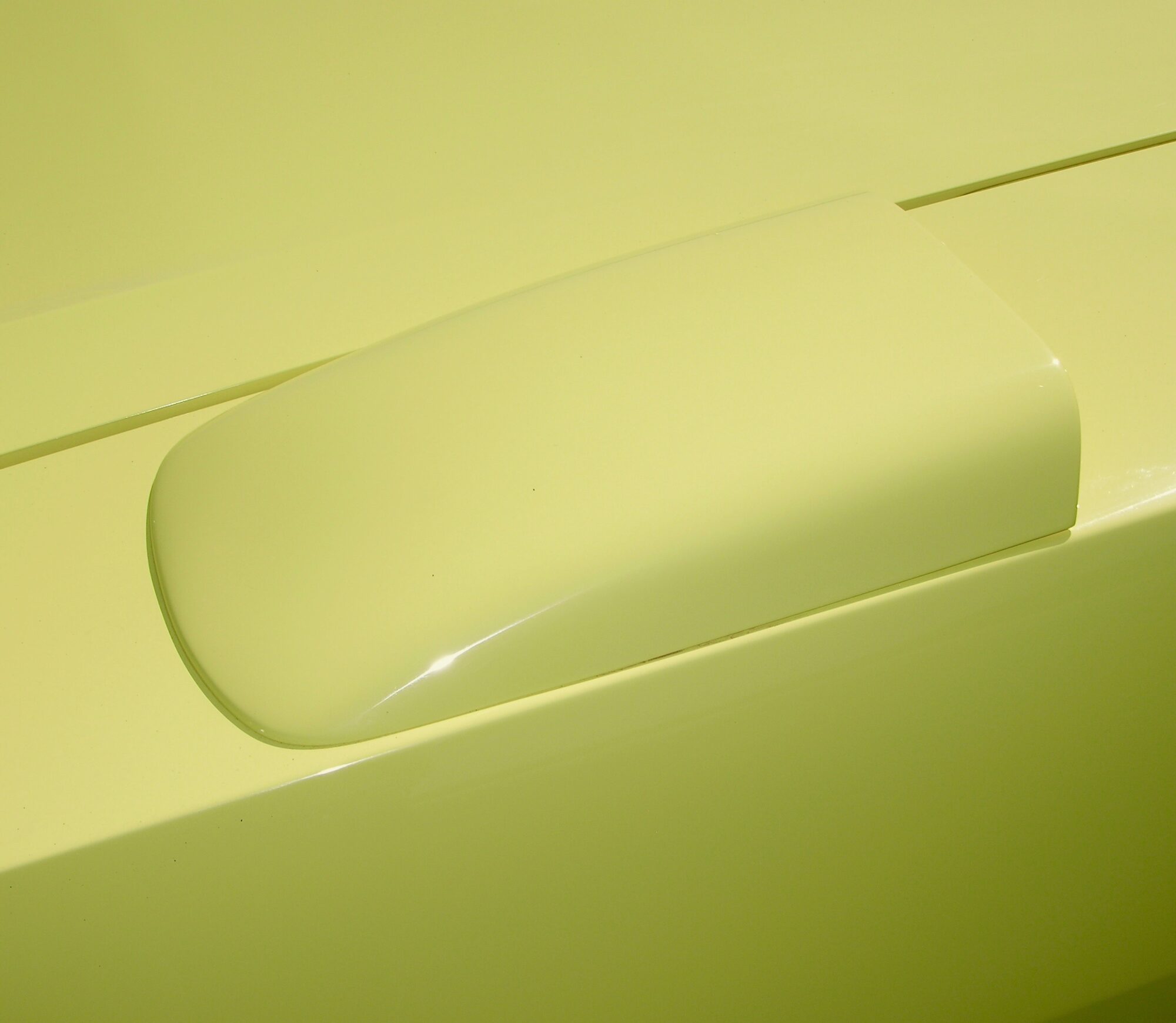
These reverse-facing scoops were fitted to production Daytonas and even though folklore claims they served some purpose of releasing air pressure, etc., they were designed for one thing and one thing only: to cover the clearance holes added on race versions to clear the tires.
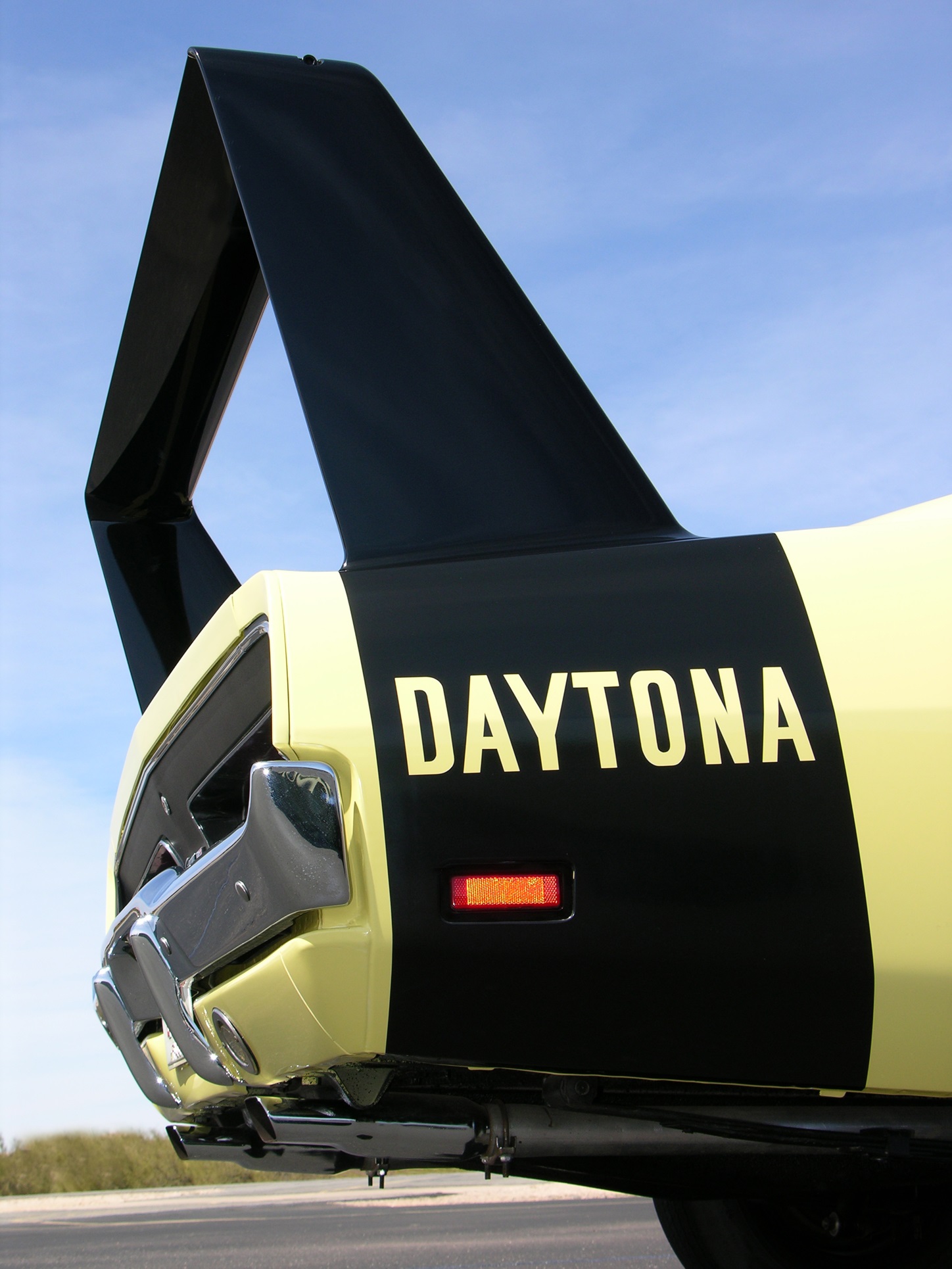
The vertical struts of the wing measure 15 inches wide at the bottom where they mount to the quarter-panels.
440 MAGNUM SIX PACK
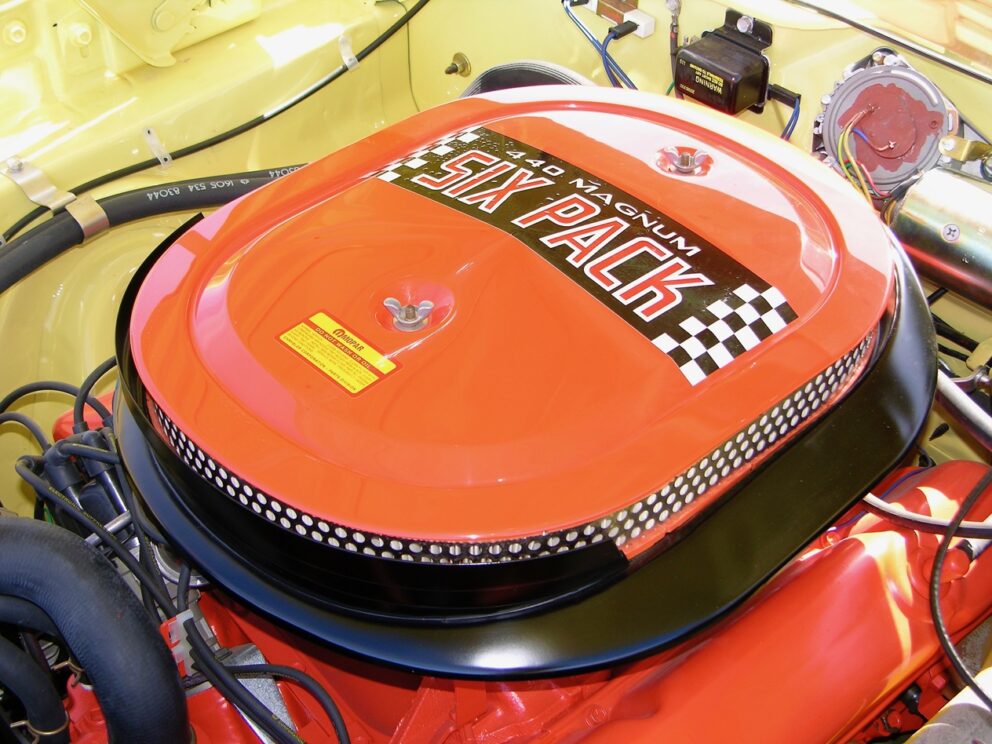
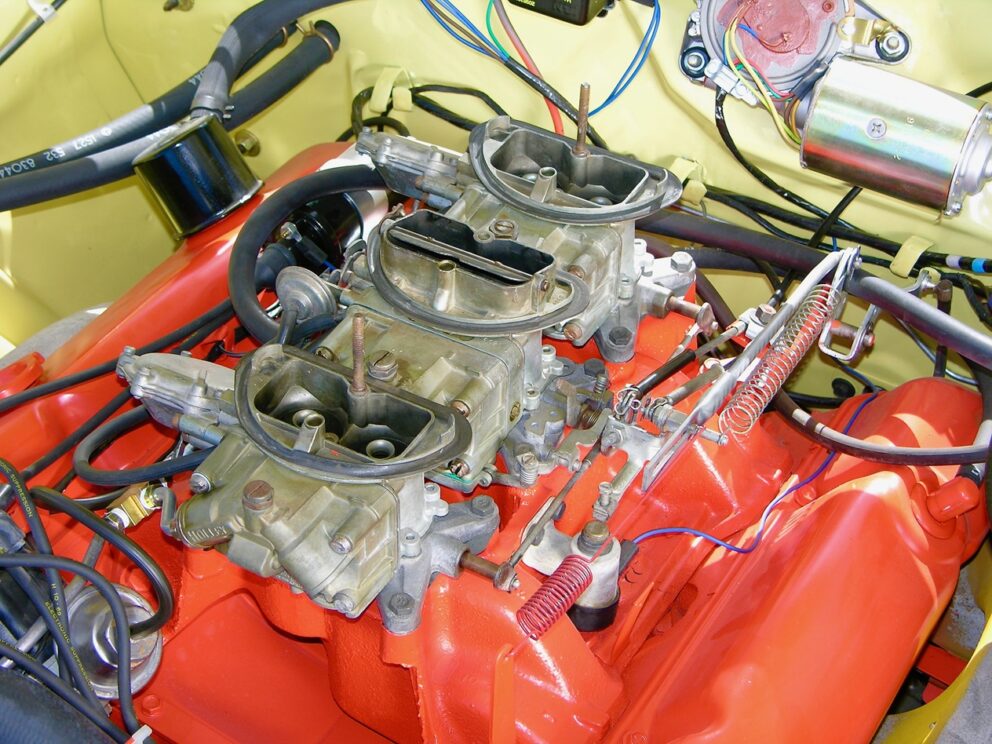
Under the hood of this particular example sits an anomaly of an engine, a Six Pack-equipped 440-cid wedge. It is said that the buyer actually wanted a HEMI engine-powered Daytona, but a deal was made where a Six Pack induction system would be added to the existing 440 wedge, installed by the dealer’s service department to get the sale. It was quick thinking and good salesmanship to move the $5,100.00 car, and the buyer ended up with a true collectible car!
LOOKS OF AMAZEMENT
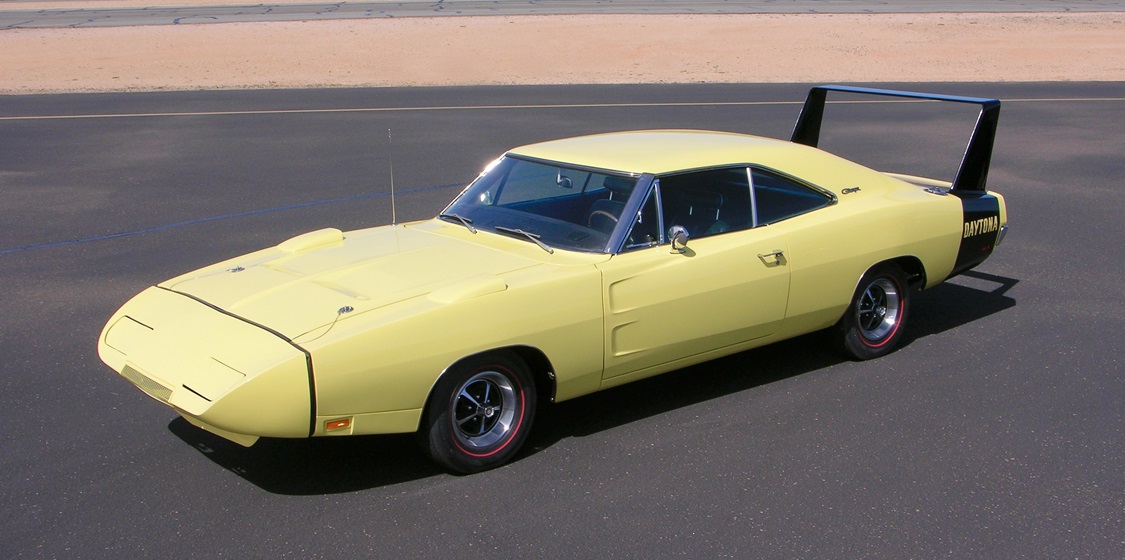
When a brand-new 1969 Dodge Daytona was road tested by Jim McCraw in the September 1969 Super Stock & Drag Illustrated, here’s how he described the driving of the car: ” We were on the receiving end of 10,000 glances, stares, and open-mouthed looks of amazement. We were stopped along the way by the state police forces of Ohio and Pennsylvania just to explain the car.”
OPTIONAL ROLLING STOCK
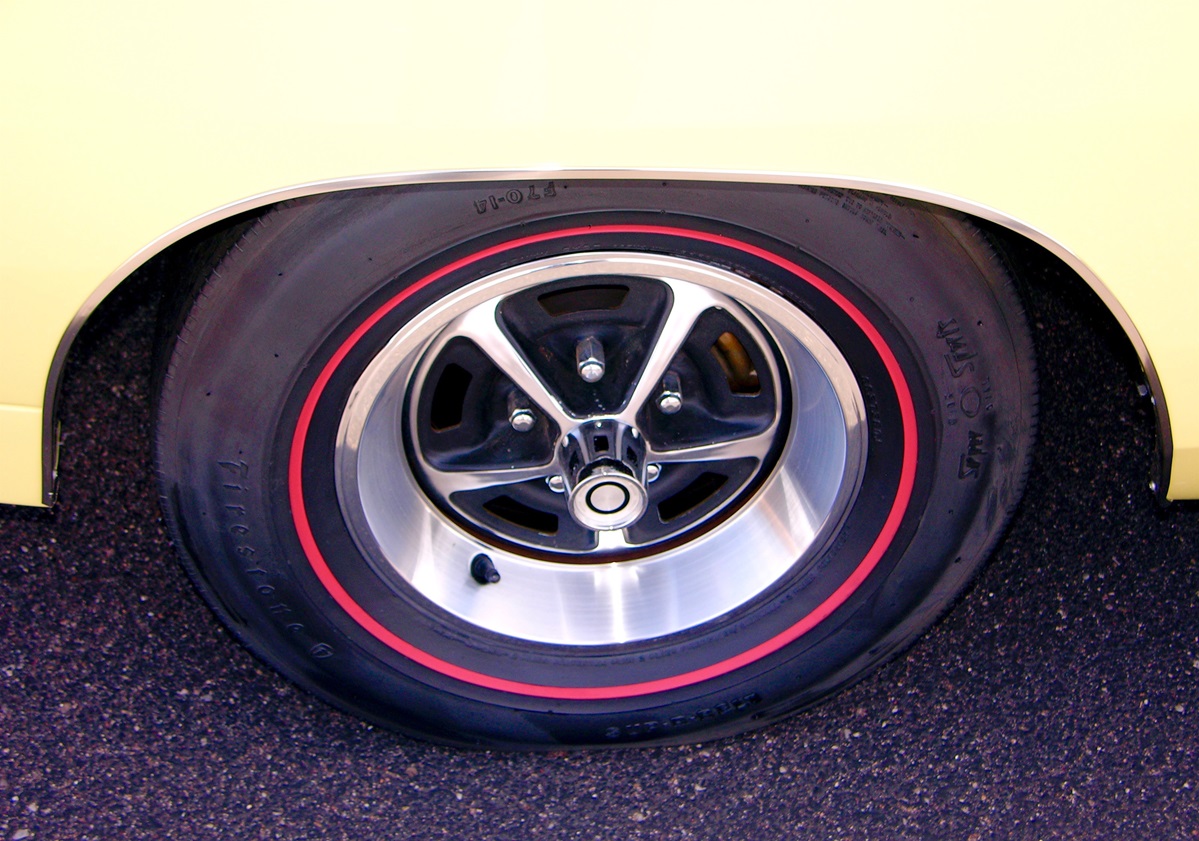
The Red Streak rubber was known as option “T83” and sized F70 x 14. This Daytona came with that rubber and they were factory wrapped with “Magnum 500” wheels (W21), which was an $86.15 option.
PRISTINE ENGINE COMPARTMENT
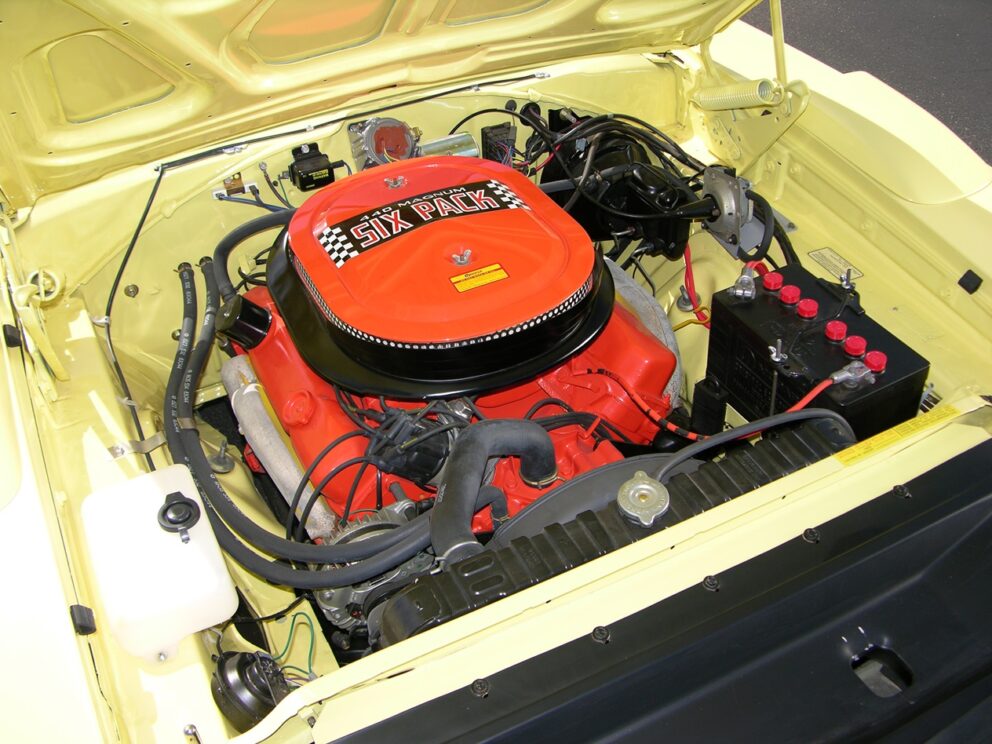
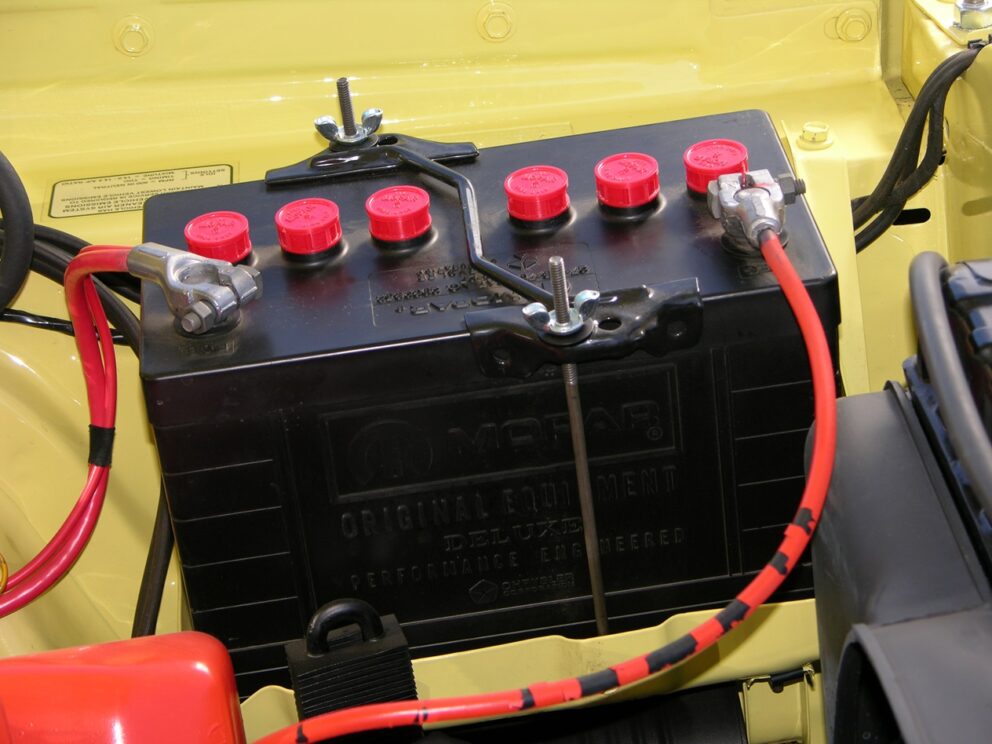
Of course Charger Daytonas only came from the factory with either a HEMI engine or standard 440 Magnum engine, but this particular car was delivered to the customer with a dealer-installed 440 Six Pack. There was confirmation of this in 1986 by John W. Smith himself, the head-honcho of the dealership back in the day, and he stated that the car was sold to Dr. James E. Outler on September 26, 1969, and that the dealership did install the multiple carburetion induction. Fitted with a correct reproduction of the original F25 70-Amp Mopar® battery, an $8.40 factory option back in the day.
LOADED WITH INTERIOR OPTIONS
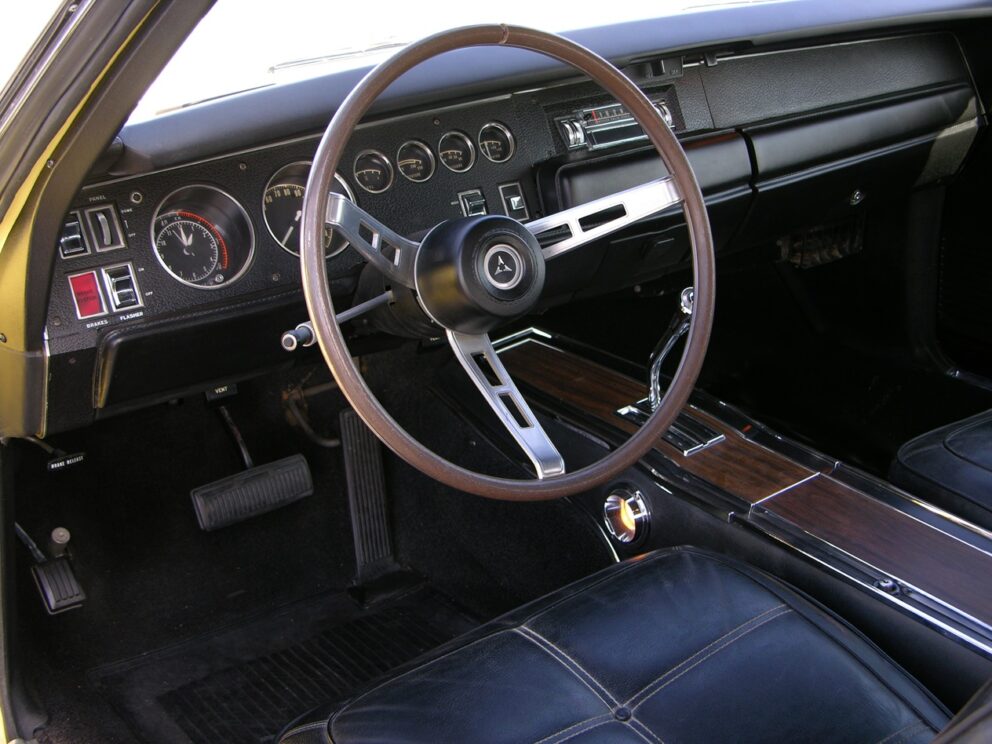
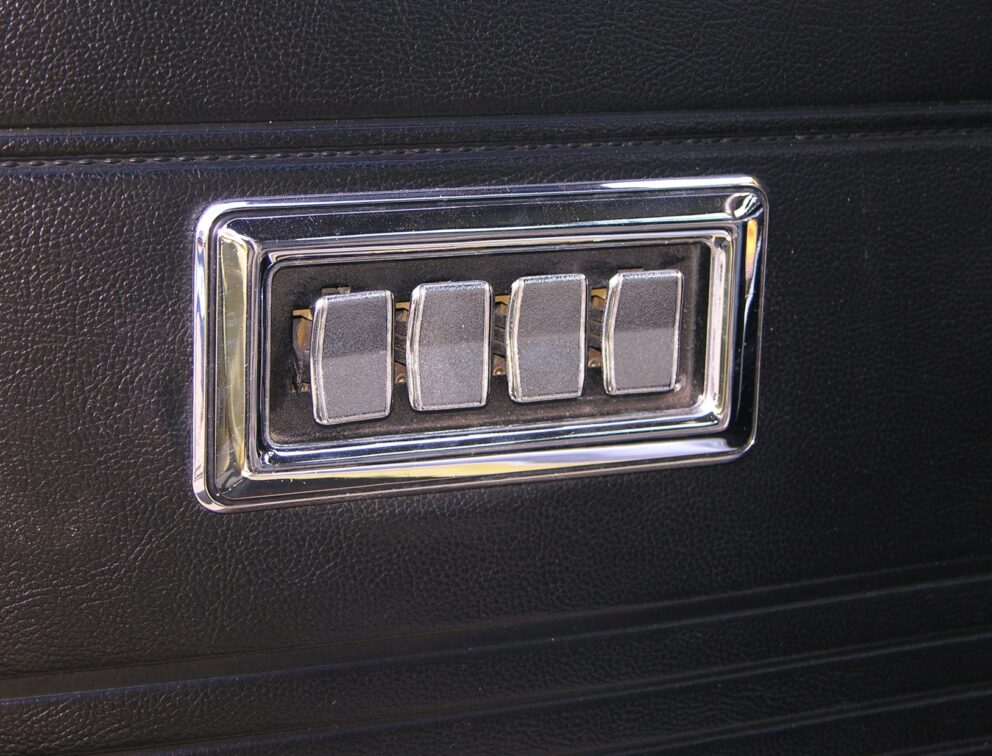
The interior is unrestored and in great condition, highlights include the R22 8-Track, N88 Speed Control, P31 Power Windows, C16 Center Console, C62 6-Way Adjustable Seat and S81 Sport Steering Wheel.
DECK LID CLEARANCE
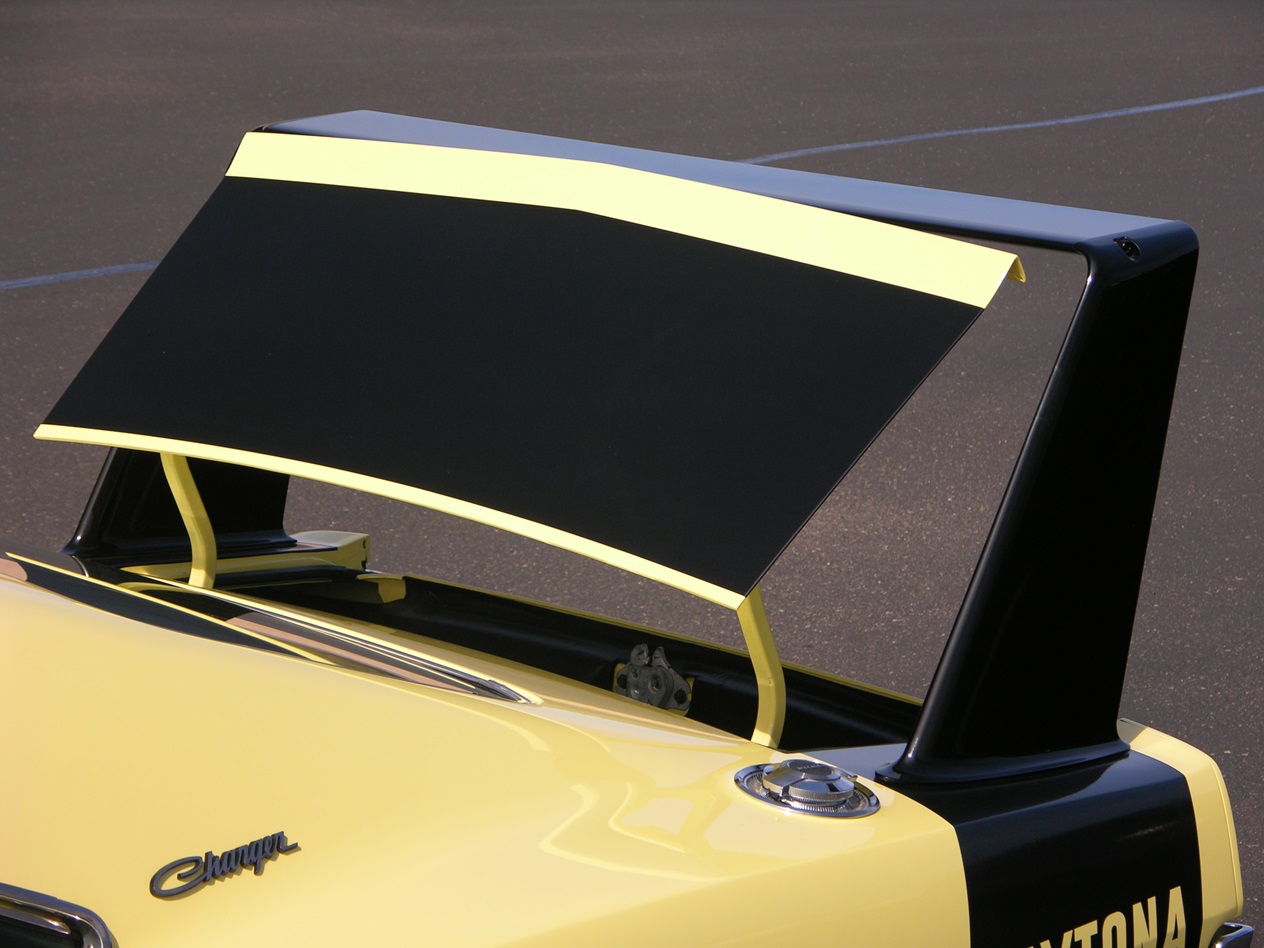
Originally, the aerodynamic specialists at Chrysler designed the rear wing to sit about 16 inches off the deck, but the Dodge front office reminded them that the car’s truck lid must be able to fully open, so it was raised up to 23.5 inches, and at that time the riser posts were widened, which greatly helped NASCAR racecar versions with stability in the corners and when the car got crossed-up.
IMPORTANT NUMBERS
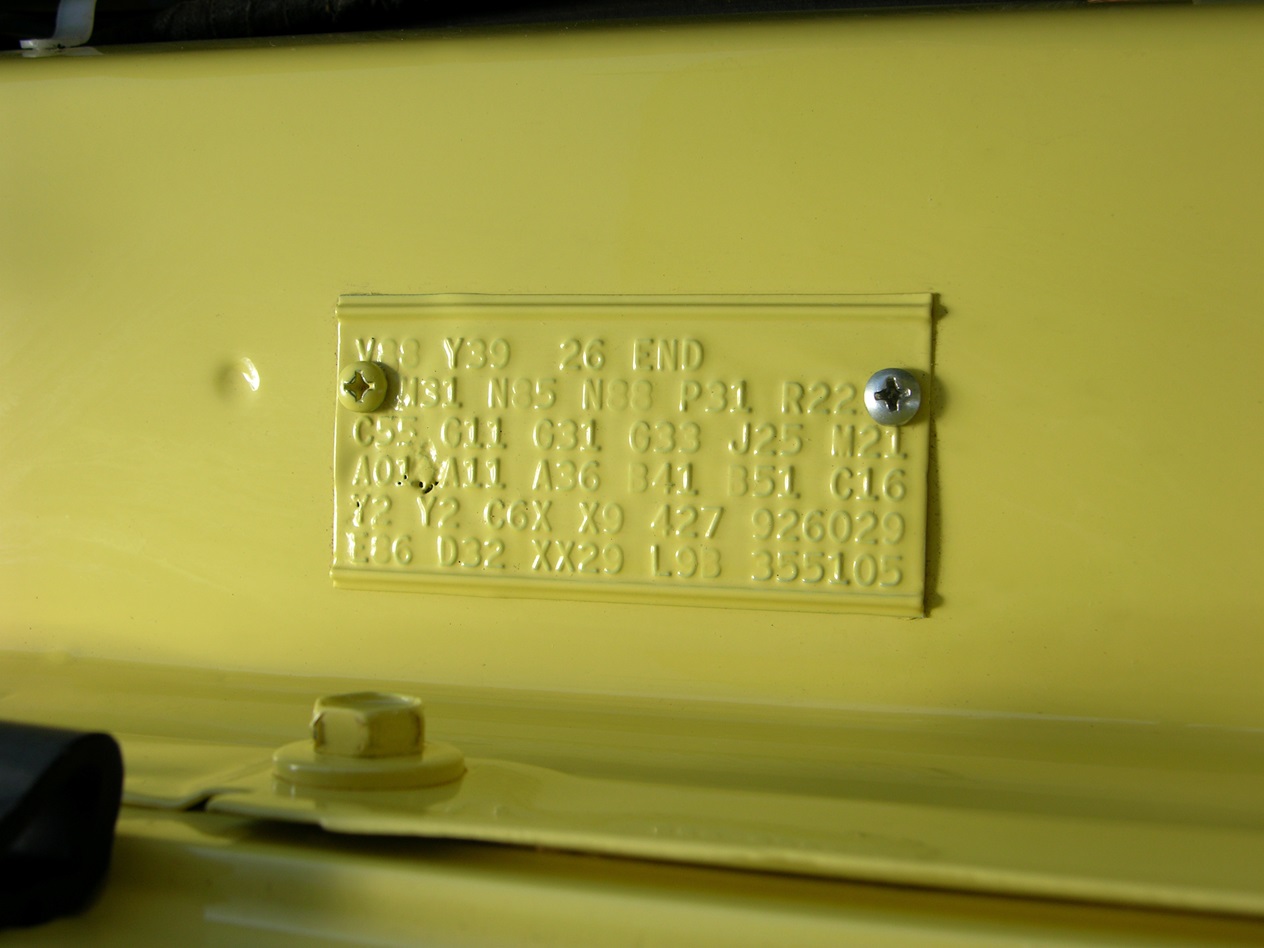
“XX29” on the fender tag identifies that this car is a Dodge Daytona, and the “E86” code reflects the 440-4 engine as equipped when it rolled off the assembly line.
ORIGINAL WINDOW STICKER
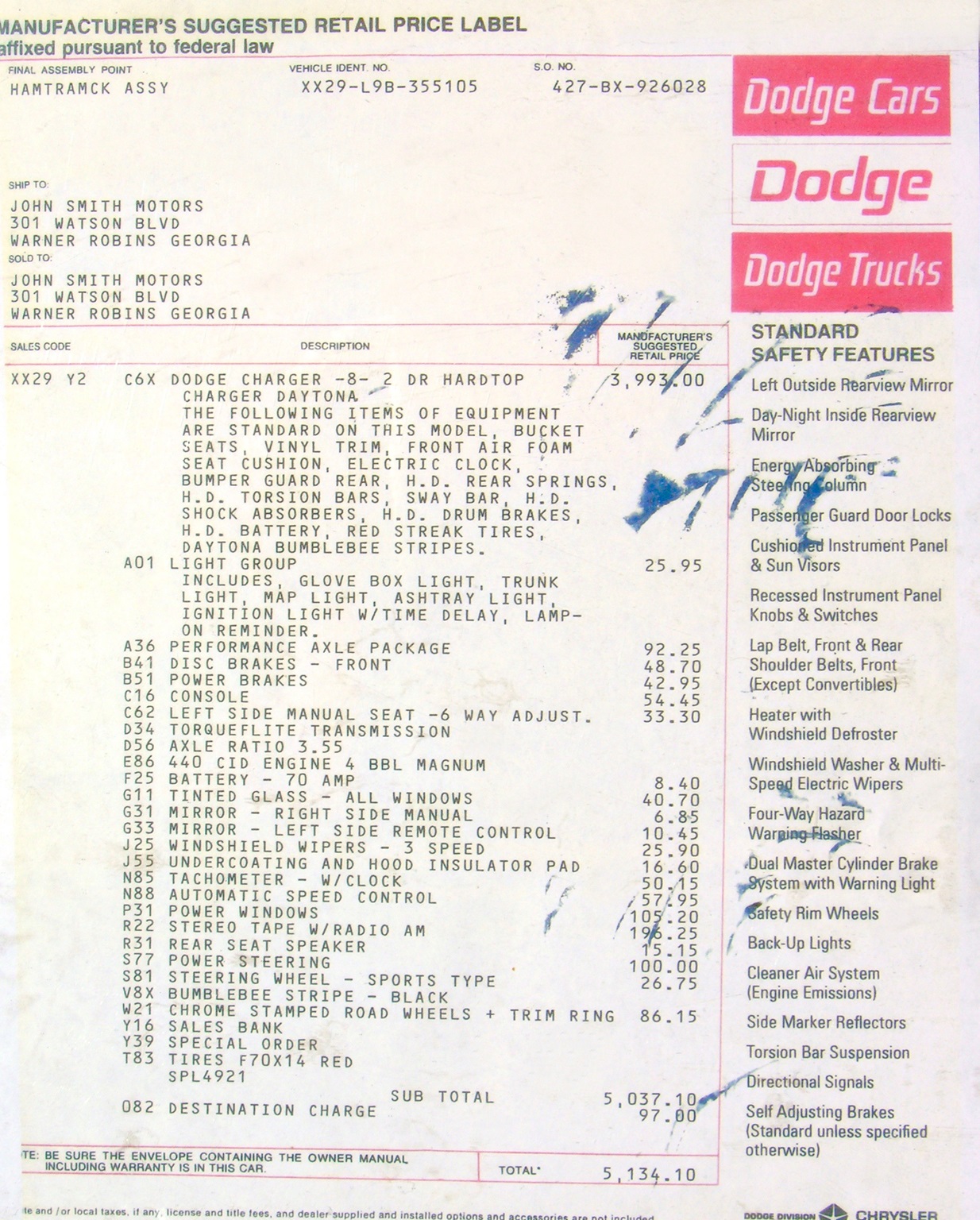
The car came out of John Smith Motors (Warner Robins, Georgia), and with destination charge, total price was $5,134.10. The Daytona model was priced $418.00 more than the standard Charger R/T.
STREET VERSIONS ARE SERIOUS HEAD-TURNING VEHICLES
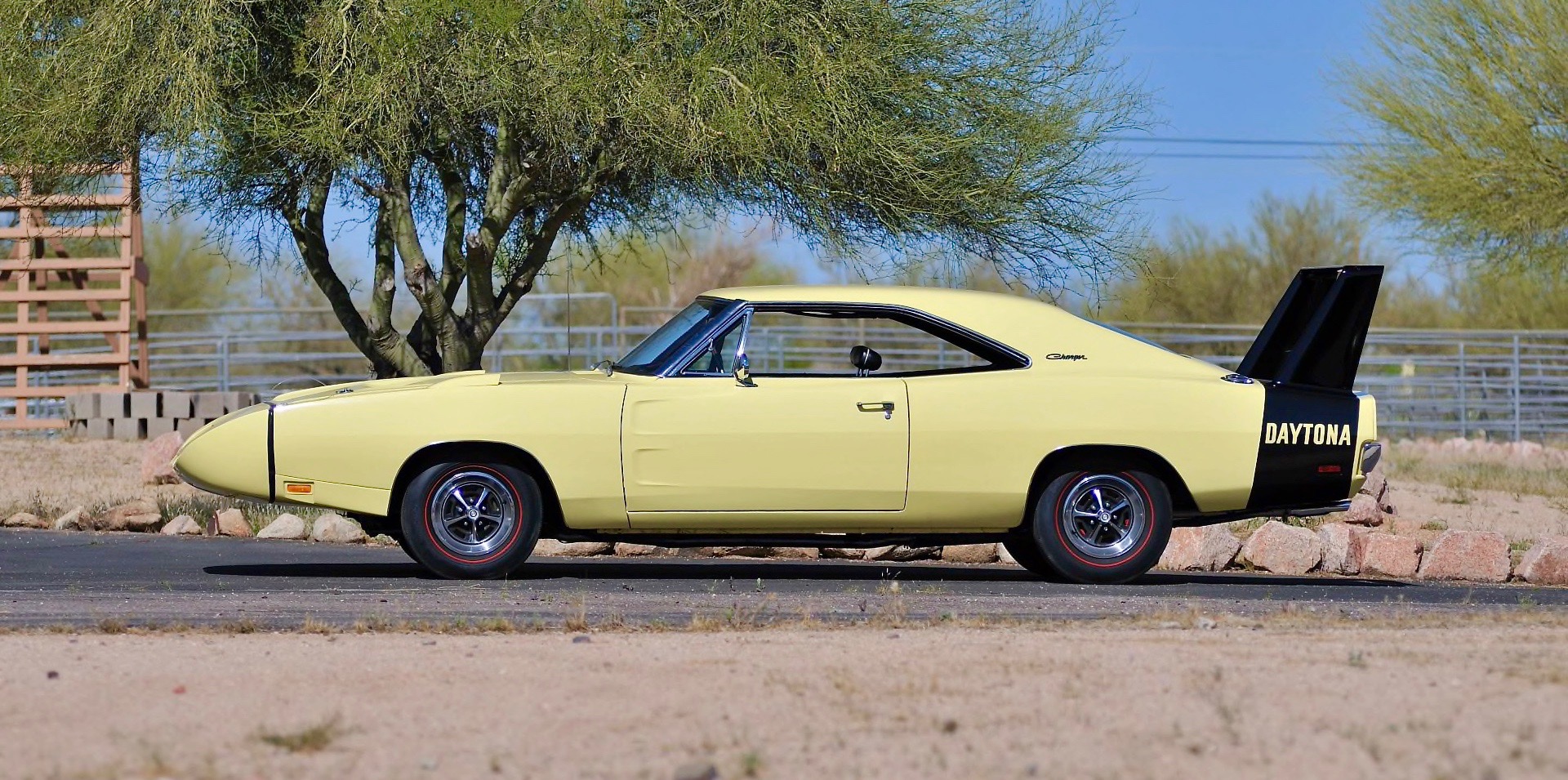
A thing of beauty! Well at least that’s what the Dodge racers and fans in NASCAR at the time thought! The Charger Daytona always was an attention grabber on the street – no question about it. And for people that didn’t follow stock car racing, it must have really created questions like “why” and “are you serious?”
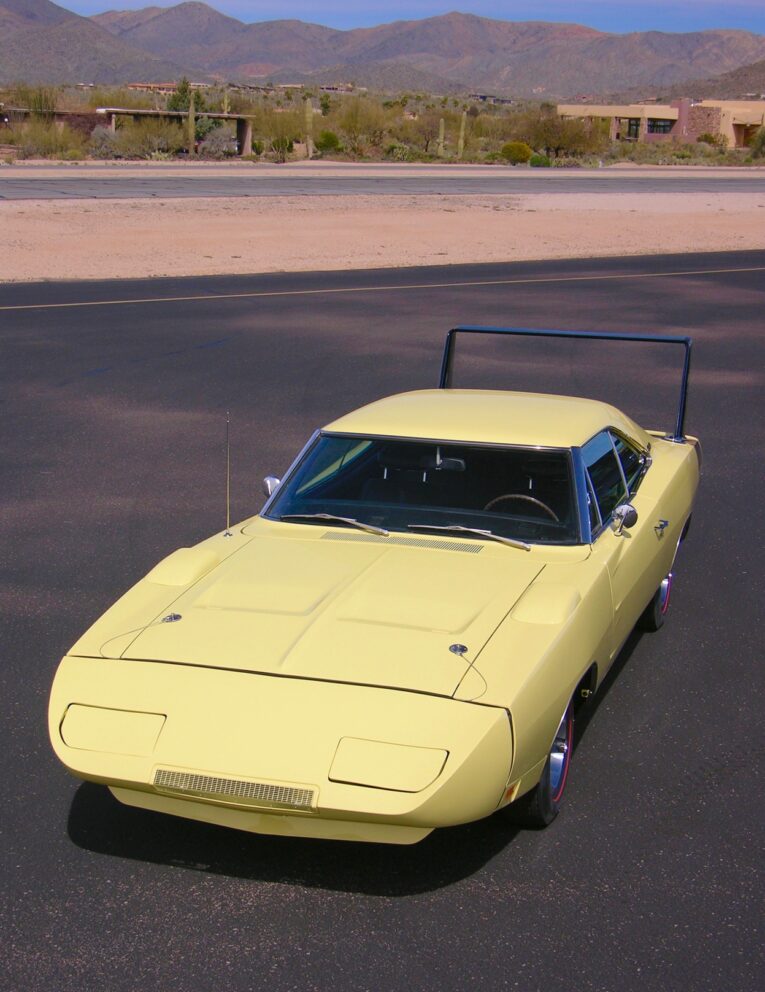
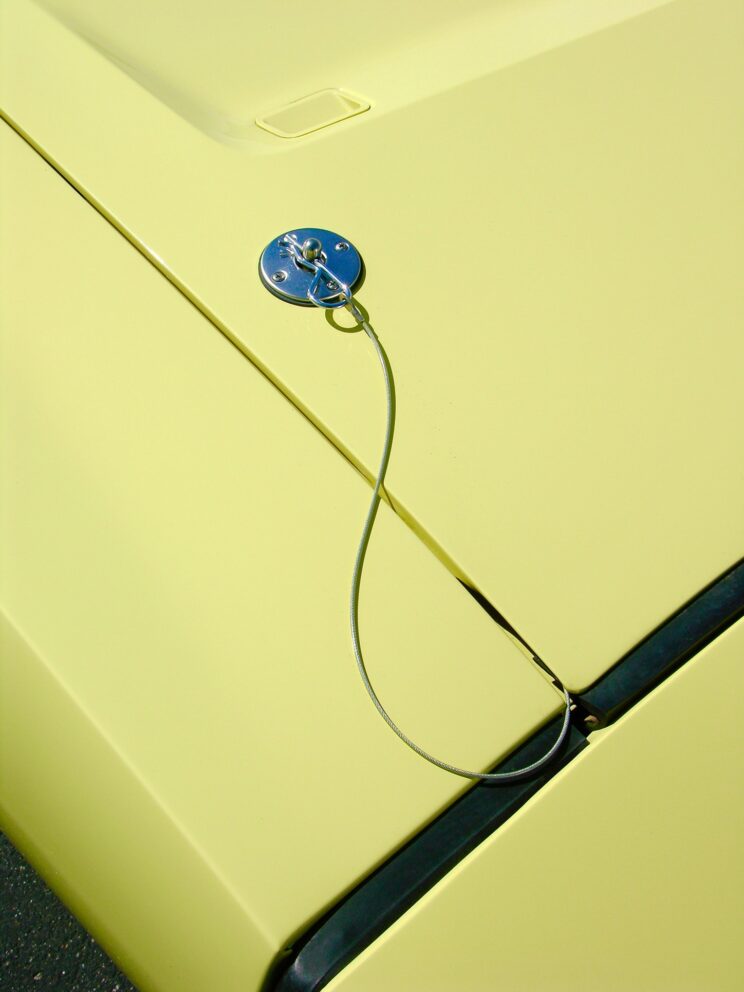
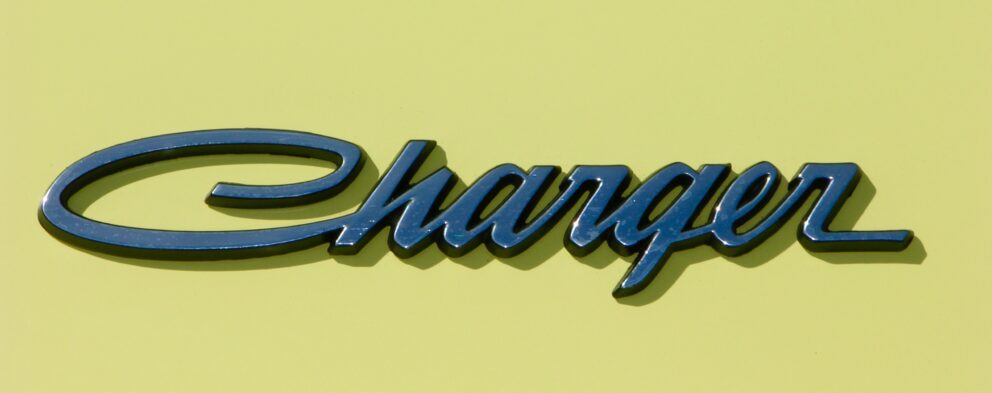
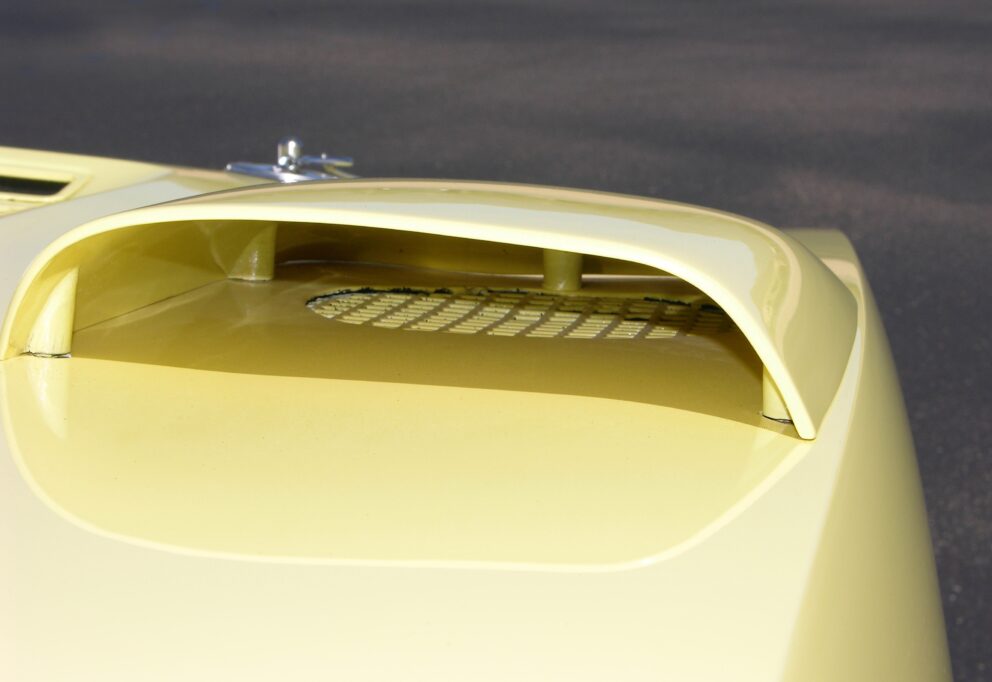
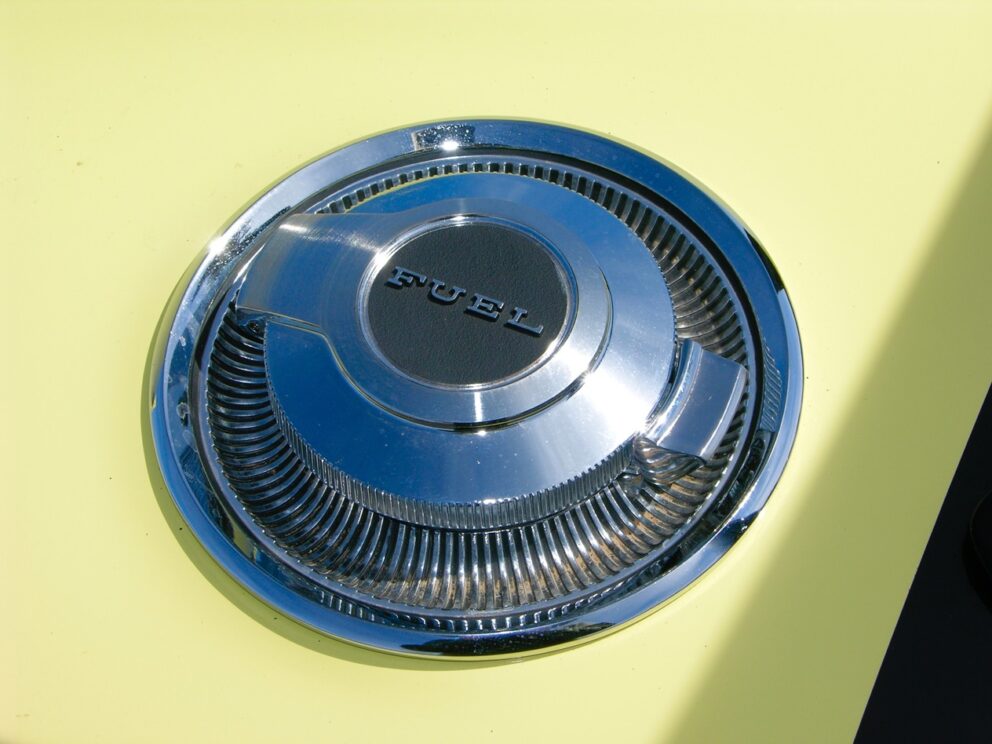
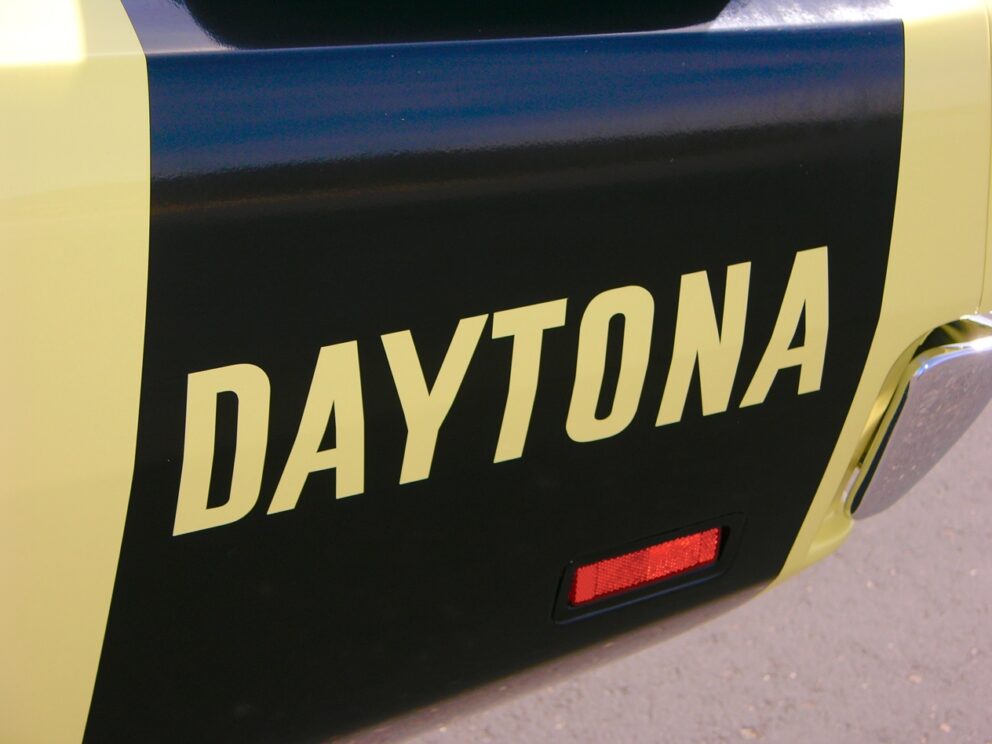
A12 DODGE FOR 1969
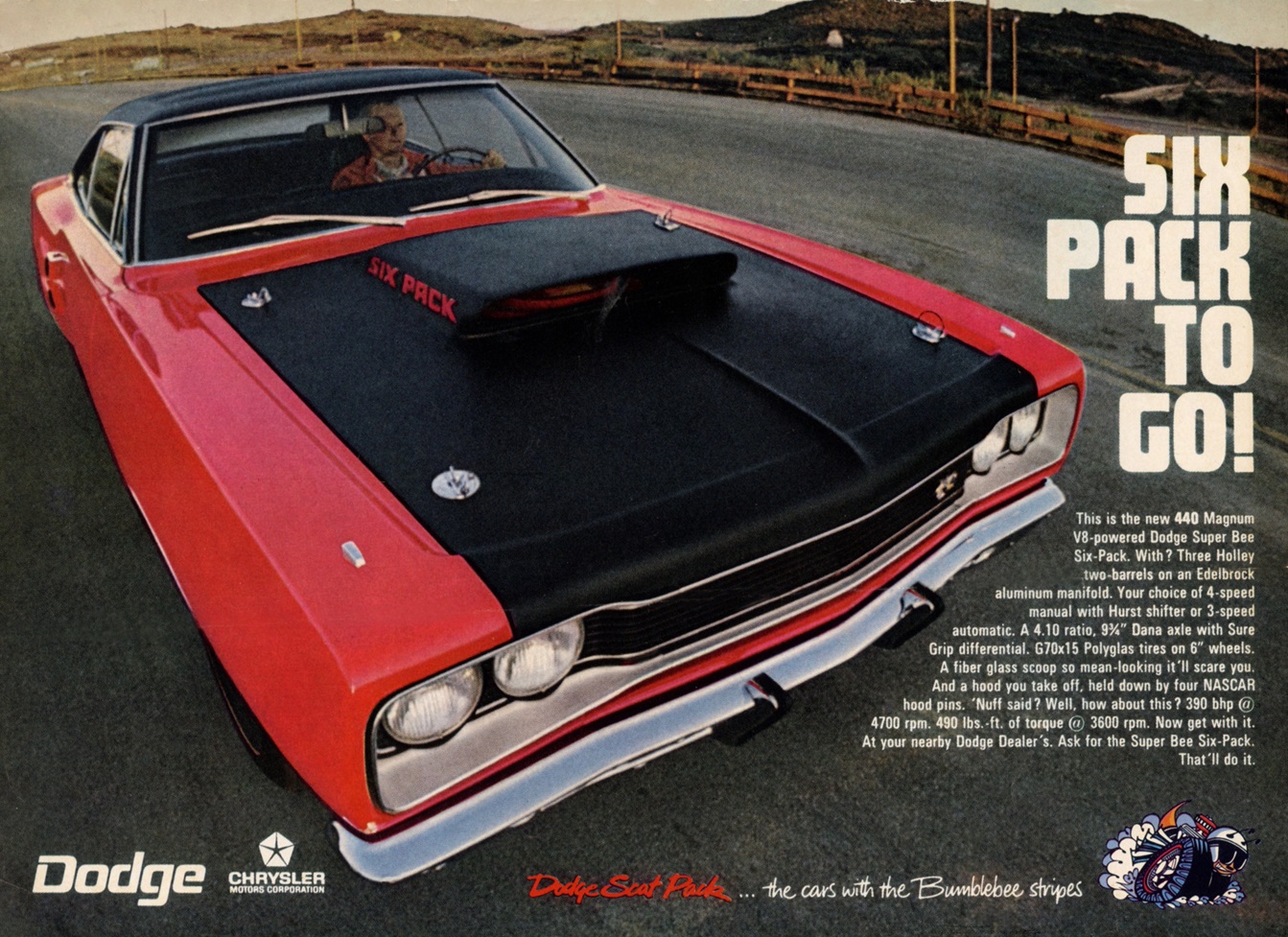
A mid-model-year option, a new powerplant known in and around Dodge dealerships in 1969 was the special, extra-cost ($468.80) “440 Magnum Six-Pack” which was available under the “A12” ordering code, only for Coronet Super Bee buyers. The specifics of the engine: Edelbrock aluminum 3×2 intake manifold, triple Holley 2300 Series two-barrel carburetors (350-cfm center, 500-cfm outboards), beefier connecting rods, revised harmonic balancer, compression ration raised to 10.5:1 (from 10.1:1), moly-filled piston rings, revised low-taper camshaft, flat-face hydraulic lifters, HEMI valve springs, chrome-tipped intake and exhaust valve stems, dual-breaker distributor. Power listed at 390 horsepower, 490-lb.ft. of torque.
Author: James Maxwell
